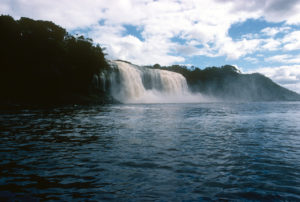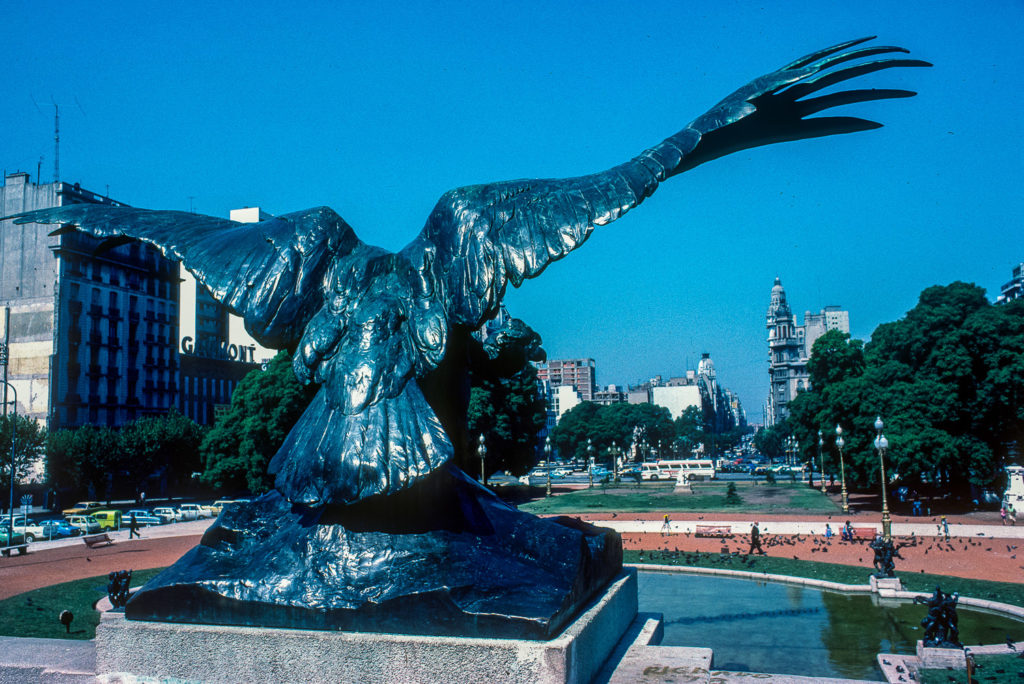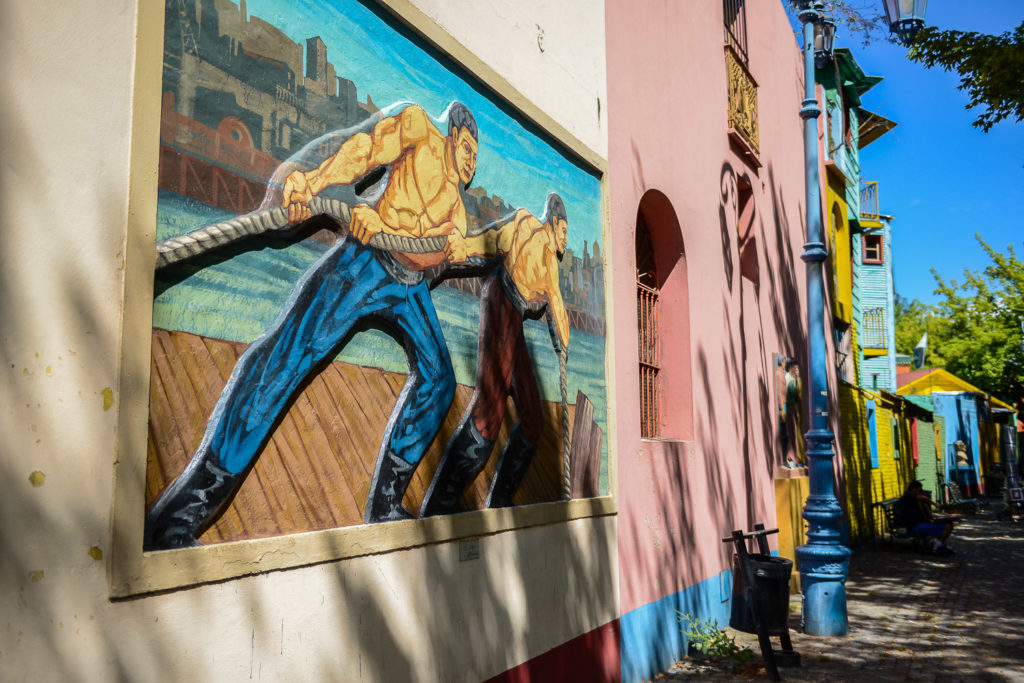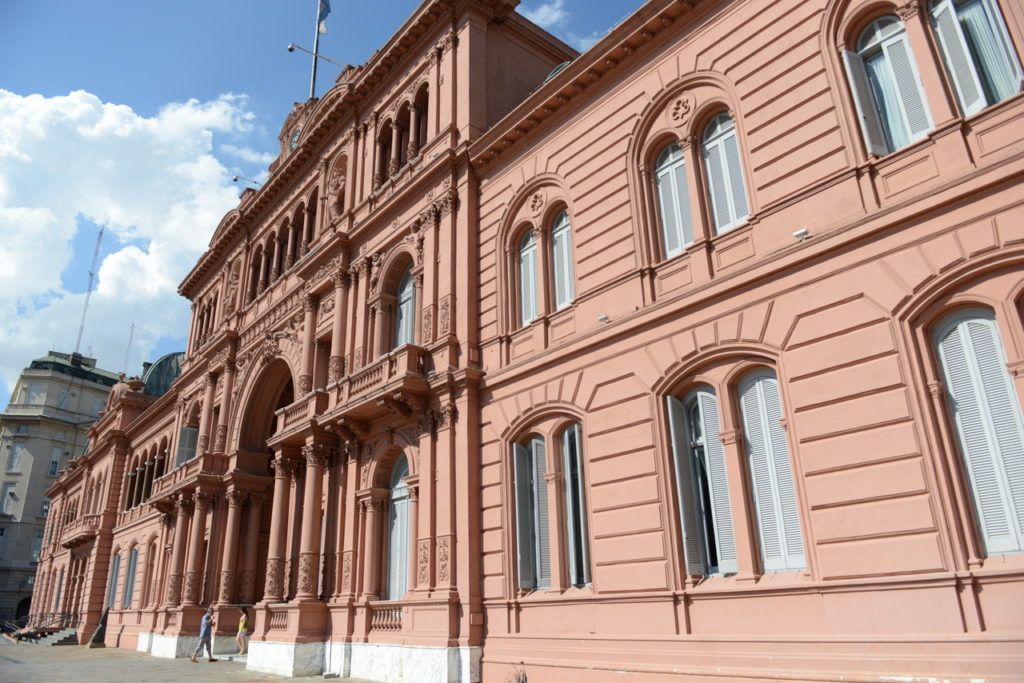
Honeymoon Part One: South America -1979
by Clive and Carol-Ann Jackson
Guns drawn, four intimidating soldiers surrounded me as a seemingly straightforward dispute escalated out of control at a hotel in Asuncion, Paraguay.
It was over my refusal to pay a hotel bill because I believed I was being ripped off. My wife stood helplessly nearby. Tension mounted. As the impasse escalated the only way I was able to resolve the deadlock was to demand a call to the British Consulate where a diplomat was able to negotiate a settlement between the hotel manager and me.
We had arrived late the previous evening in Asuncion, the capital of a country known at that time as a sanctuary for Nazi criminals, on the way to Iguazu Falls, Argentina. To our amazement we couldn’t find a hotel room, and after being turned away by hotel after hotel we settled for what wasn’t much bigger than a broom closet with a filthy, unmade bed (and even worse bathroom) in a hotel, the Guarani, just off the main square.
The problem arose when they tried to charge me full price for a suite, and I said I wouldn’t pay more than half that for the tiny, dirty room. At which point I was relieved of my luggage and my young wife, at gunpoint. The British diplomat sided with me, and in the end I won. The guns were lowered and I was released into my wife’s arms.
That unsavoury incident happened about half way through an extended trip to South America and Africa in early 1979. It was a three month long honeymoon – though several months after our marriage in Vancouver the previous September. It was a trip my mother said would either make or break our marriage: living out of a suitcase as we travelled through tropical heat in what were still, in many cases, third world countries.
My wife, Carol-Ann, was working for Air Canada at the time and had arranged an elaborate network of flights throughout South America and then on to Africa. Our first stop was Caracas, Venezuela, having flown out of Miami on New Year’s Day, 1979.
For that first night I wanted to set the tone for the trip and keep the costs down so we checked into a cheap, dockside motel – so cheap the door had no lock, as there was a hole punched in it alongside where the lock should have been, and the bathroom was crawling with cockroaches. We were so scared that after a sleepless night, aware of even the tiniest noise, we decided never again would we risk everything to save money. From there on in we’d stay at better hotels, the price be damned.
 Venezuela was relatively safe in those years and we spent several days there while we gambled on clear weather as we made an attempt to see Angel Falls, at well over 3,000 feet, the highest in the world. While we were able to secure a flight to catch a good look from the air, weather conditions made it impossible to get really close. We flew on to Canaima, a remote part of the jungle, close to the borders of Guyana and Brazil. Now a UNESCO world heritage site, about the size of Belgium, its best known features are “tepuis” – towering, flat topped mountains with vertical drops, creating spectacular landscapes and waterfalls, like Angel Falls.
Venezuela was relatively safe in those years and we spent several days there while we gambled on clear weather as we made an attempt to see Angel Falls, at well over 3,000 feet, the highest in the world. While we were able to secure a flight to catch a good look from the air, weather conditions made it impossible to get really close. We flew on to Canaima, a remote part of the jungle, close to the borders of Guyana and Brazil. Now a UNESCO world heritage site, about the size of Belgium, its best known features are “tepuis” – towering, flat topped mountains with vertical drops, creating spectacular landscapes and waterfalls, like Angel Falls.

From Venezuela we flew to Lima, Peru, which became our base for several flights. First to Manaus at the head of the Amazon, where two rivers – the dark waters of the Negro and the brown Solimoes converge in a strikingly visual phenomenon. In humid conditions, with the temperature well over 100 degrees, we went for a hike with a guide through the Amazon jungle – where Carol-Ann, trying desperately to avoid a snake, stepped on an ants nest and within seconds her right leg was black with literally tens of thousands of ants. Everyone in the group battled to rid her of the vicious insects and although she did suffer from shock, she had remarkably few bites considering their numbers.

And in the city on Manaus itself we had a chance to see the famous opera house – an unexpected jewel in the middle of the jungle – with its distinctive dome covered in 36,000 tiles painted in the colours of the national flag of Brazil.

As we stood outside our hotel at night, Carol-Ann said we should always remember the sounds of the jungle because we’d be unlikely to hear that sound again. And we haven’t. It was a cacophony of insects, animals and birds communicating with each other in the steamy heat.
Back to Lima, our hub, we flew to what was to be one of the highlights of this trip – Cusco, 10,000 feet up in the Andes. So high, in fact, we were given a special blend of coca leaves (the raw material for cocaine) as a hot drink to help with the effects of altitude sickness: shortness of breath, dizziness, nausea and headaches. It worked. And we were able to enjoy the city which was once the capital of the Inca empire and is known for its archaeological remains and Spanish colonial architecture. But the heart wrenching poverty of hungry children is what we will never forget. And probably was the reason for the birth of the terrifying Shining Path movement.



We took a two-hour early morning train ride from Cusco to Machu Picchu – climbing the last 2,000 feet on a run-down old bus up a steep, winding, gravel track to the lookout over the ancient Inca ruins. It was breathtaking, enhanced by the mist swirling up from the Urubamba River below.




Built in the fifteenth century, it wasn’t discovered by the outside world until 1911. The 200 or so ruins are made up of religious, ceremonial, astronomical and agriculture buildings – all on a steep slope, crisscrossed with stone terraces.
On the mountain side overlooking the main ruins there was a tiny, dorm like structure. I wouldn’t call it a hotel, as there were no facilities to speak of and no food available. Having said that, the few rooms they had had been booked up years in advance. And for reasons I can’t explain one couple agreed to give us their room as they bunked with their friends in a double room. We were, and forever will be, grateful to these strangers for their sacrifice that provided us an evening and morning never to be forgotten.


Once the crowds left to take the train back to Cusco, it was a magical, almost spiritual experience for the handful of us left at the site. We had the ruins to ourselves. As the sun set, absolute peace fell on the Andes.
At daybreak the next morning, completely alone, I climbed a mountain which overlooked the ruins. Although I almost lost my camera in a crevice, as the climb was dangerously slippery, it made for some fantastic photographs and not to be forgotten memories.
We’ve been lucky enough over the years to see all the other New Seven Wonders of the World, which include Machu Picchu. For us, this was easily the most dramatic. The most beautiful.
Back to Lima, we spent a few more days in one of our favourite cities. The city is lovely but it is the people we fell in love with. During our stay, there was huge civil unrest. Strikes, no meat days, among a few of the everyday challenges facing Lima residents. Most striking and memorable to us came during a garbage strike. The poorest residents of Lima, subsisting in substandard dwellings without any services, burned their trash, swept their dusty streets and against all odds kept their children clean. Given that water was more precious than gold, these proud and beautiful ancestors of the Incan Empire left a lasting impression us.

From Lima, we flew to Santiago, Chile, a city and country governed by a authoritarian military government with buildings still scarred by the coup d’etat in September ’73.
Flying east, we arrived in the sophisticated city of Buenos Aires, Argentina. Despite the fact that Argentina was in the midst of what became known as the Dirty War, we felt quite welcome and relatively safe. But it was the time of the disappeared ones and every week between 1976 and 1983 a demonstration outside the Casa Rosada was held by mothers of the thousands of young activists who disappeared during a time of state terrorism.








But while we were there, the crimes committed were not yet on the world’s radar and certainly barely on ours. And shockingly my “best” memory was the Estancia Steak House where you could chose your own raw 24 oz steak and watch it barbecued before your eyes. And it was so tender you could cut it with a fork and it cost less than a cup of coffee today.
Next on our itinerary was supposed to be Iguazu Falls on the Argentinian/ Brazilian border when when we made that brief ill-fated stop in Paraguay. But none the worse for that experience, the Falls offered an unparalleled beauty of raw majesty. We’re been lucky enough to see most of the world’s other major falls – Victoria, Niagara, Angel – and we rate Iguazu as easily the most stunning.



The falls are three times as wide as Niagara and are located in a jungle. It is actually a collection of 275 falls, some over 250 feet high.
Leaving Asuncion we flew on a commercial flight to Sao Paulo, with a frightful landing on a runway literally carved between scores of high rise apartment buildings. Then by overnight bus to Rio, where we spent ten days relaxing at a hotel just off Ipanema Beach. It was a week or so before carnival and the streets were bouncing, thousands dancing to the rhythm of the Samba.
After an intense month on the road, we loved what is perhaps the most famous beach in the world, Copacabana. There were visits to the iconic Sugar Loaf Mountain and Christ the Redeemer monument, built in 1931 (now one of the New Seven Wonders of the World).






I even managed a trip to see a soccer game at the Maracana stadium, which supposedly held 200,000 people. What made the game more interesting however, was just getting there. The bus broke down minutes before the start of the game and along with a dozen other desperate fans we pushed it several blocks to get it restarted and just made it in time for kickoff.
The next day we left for Africa after six weeks in South America.


